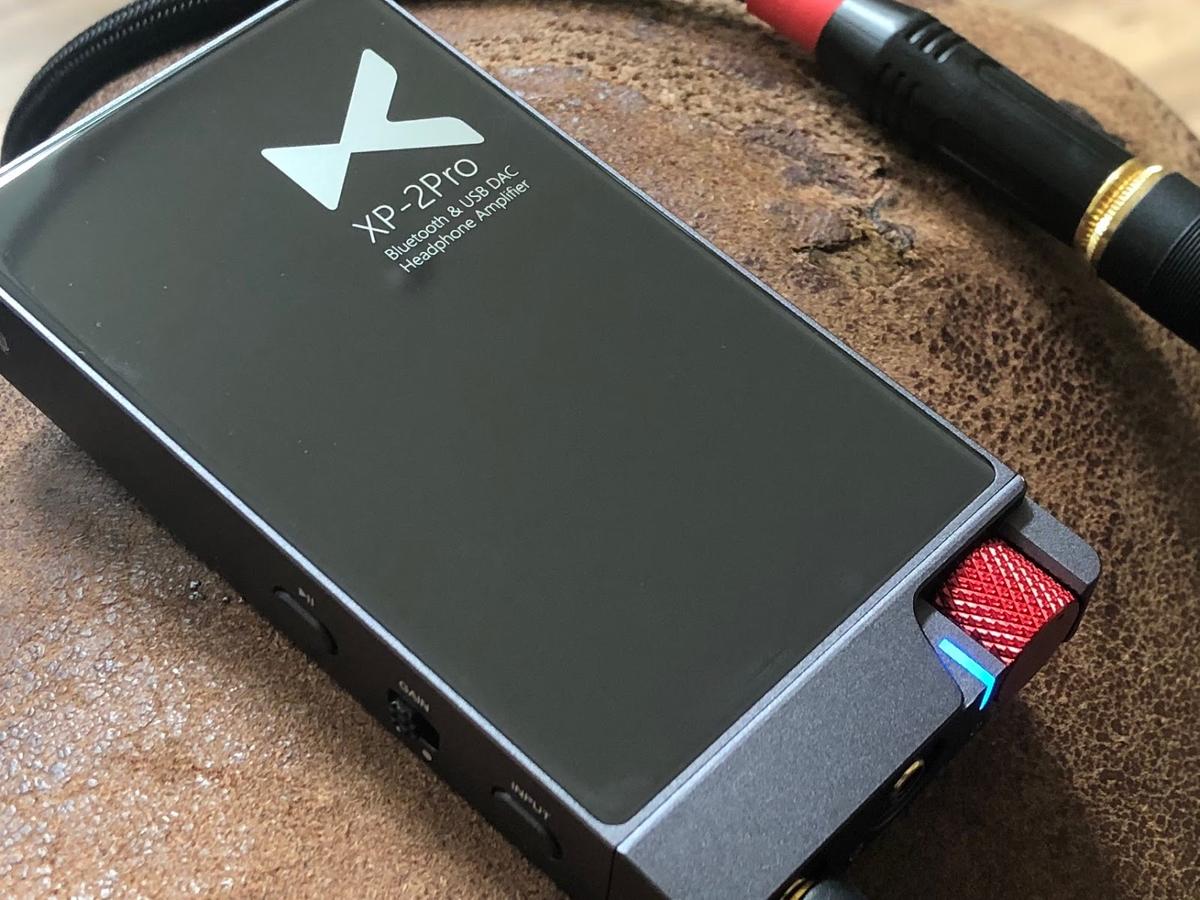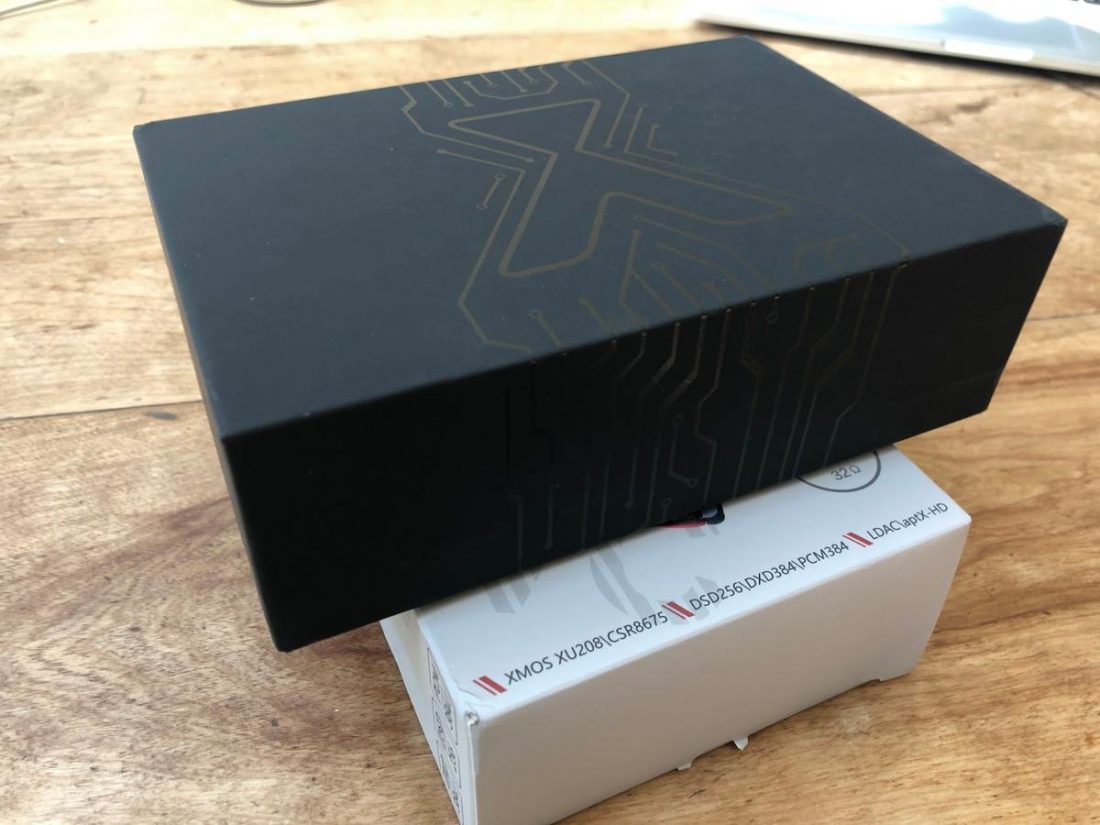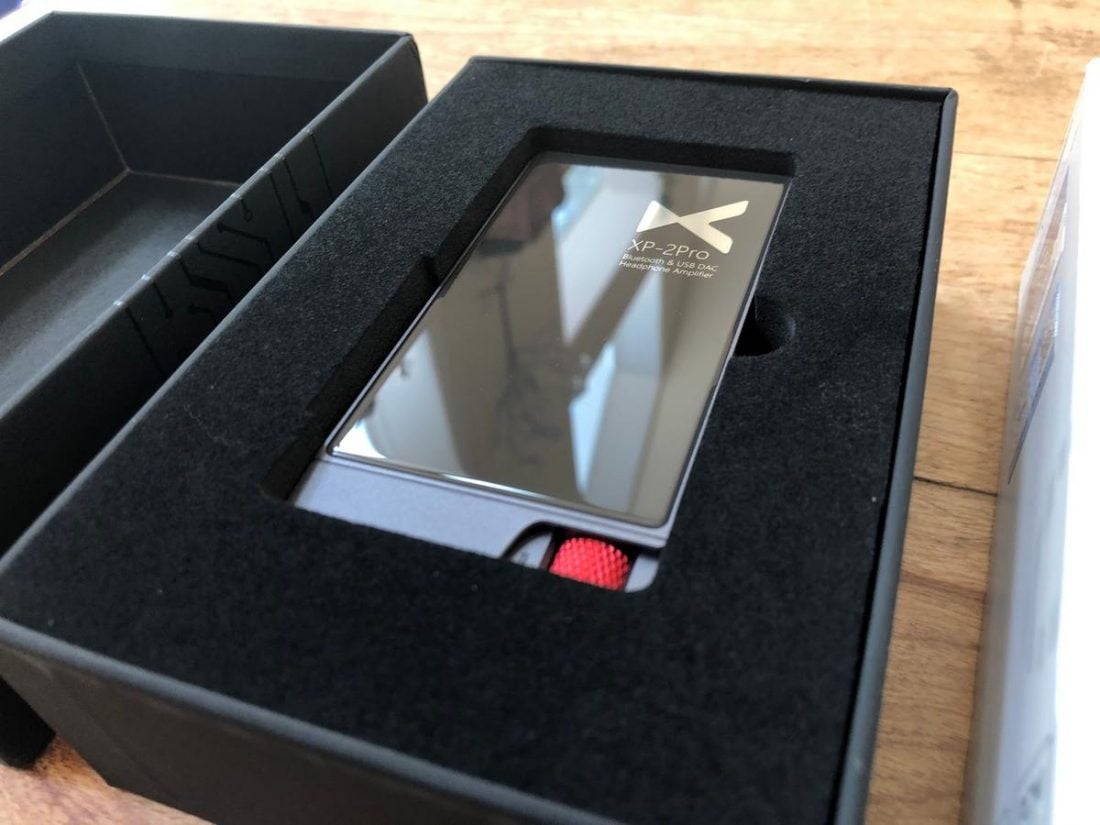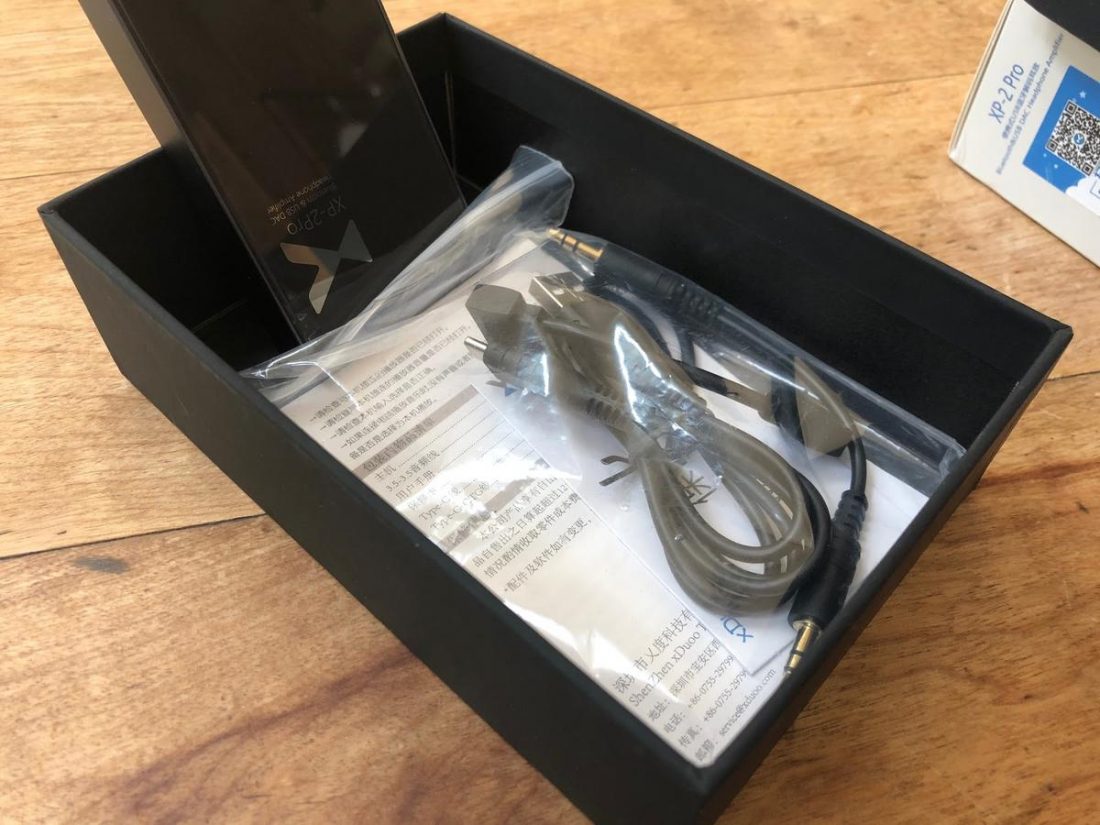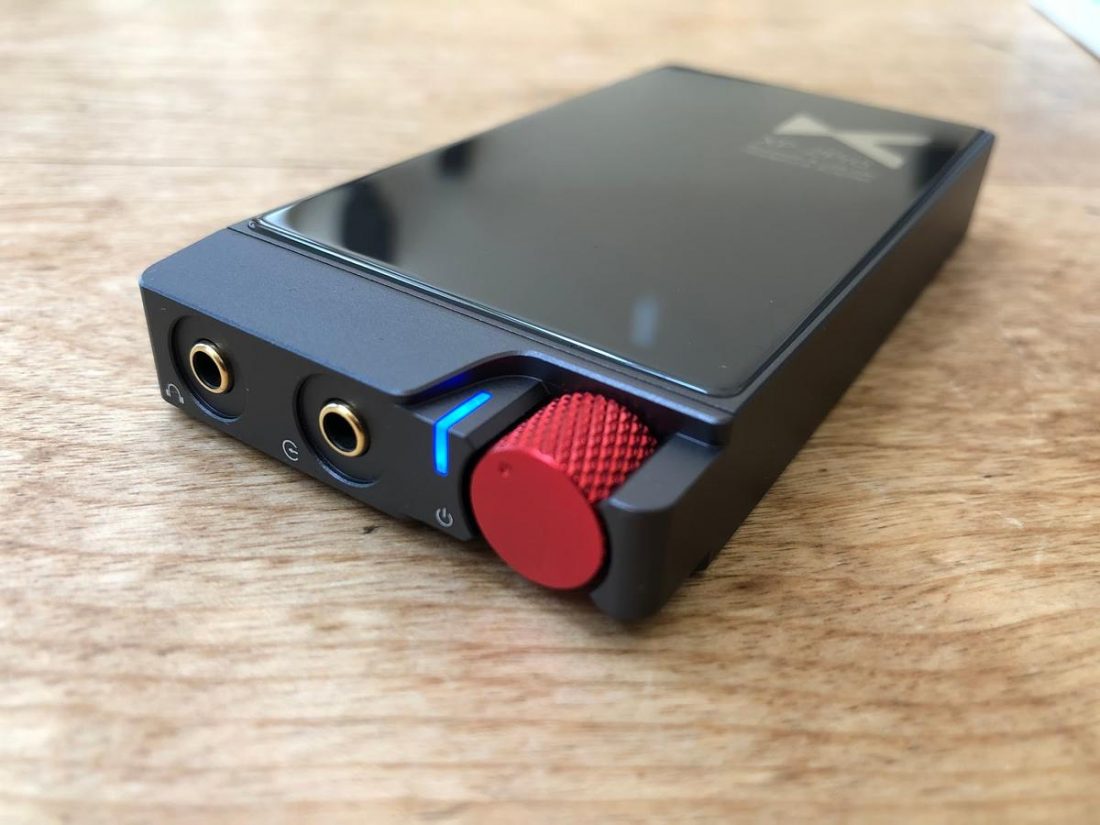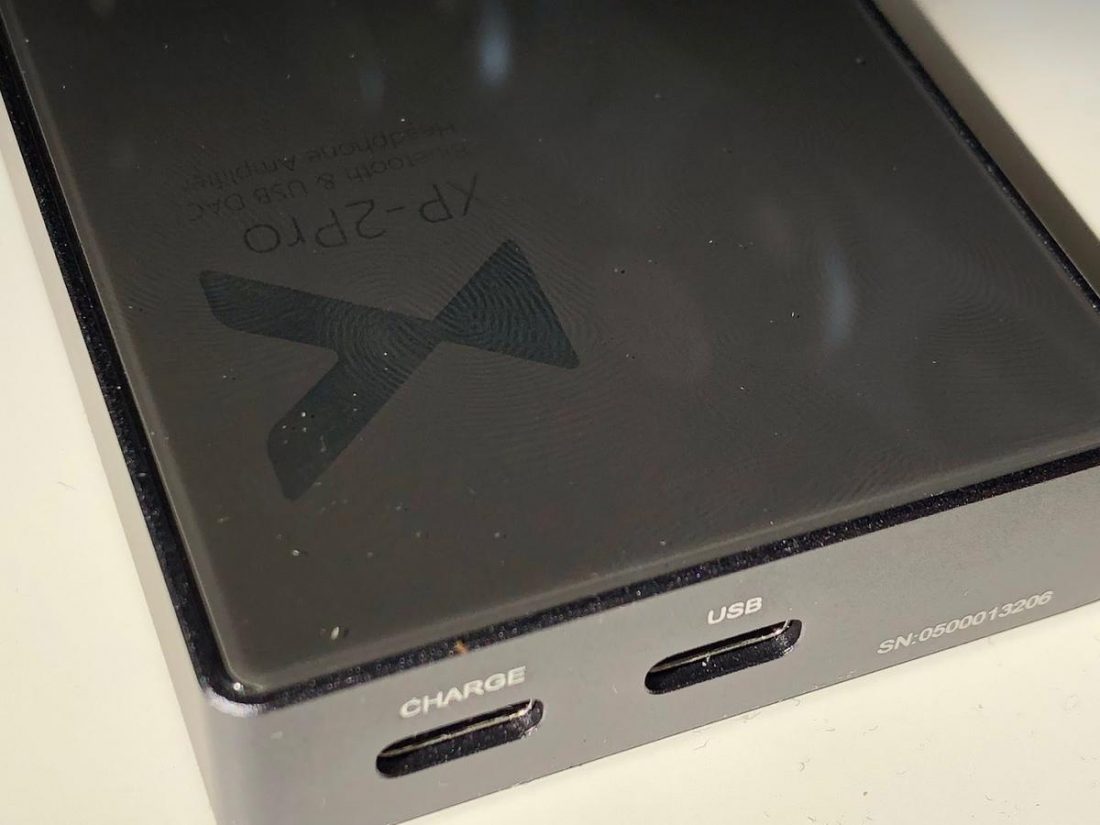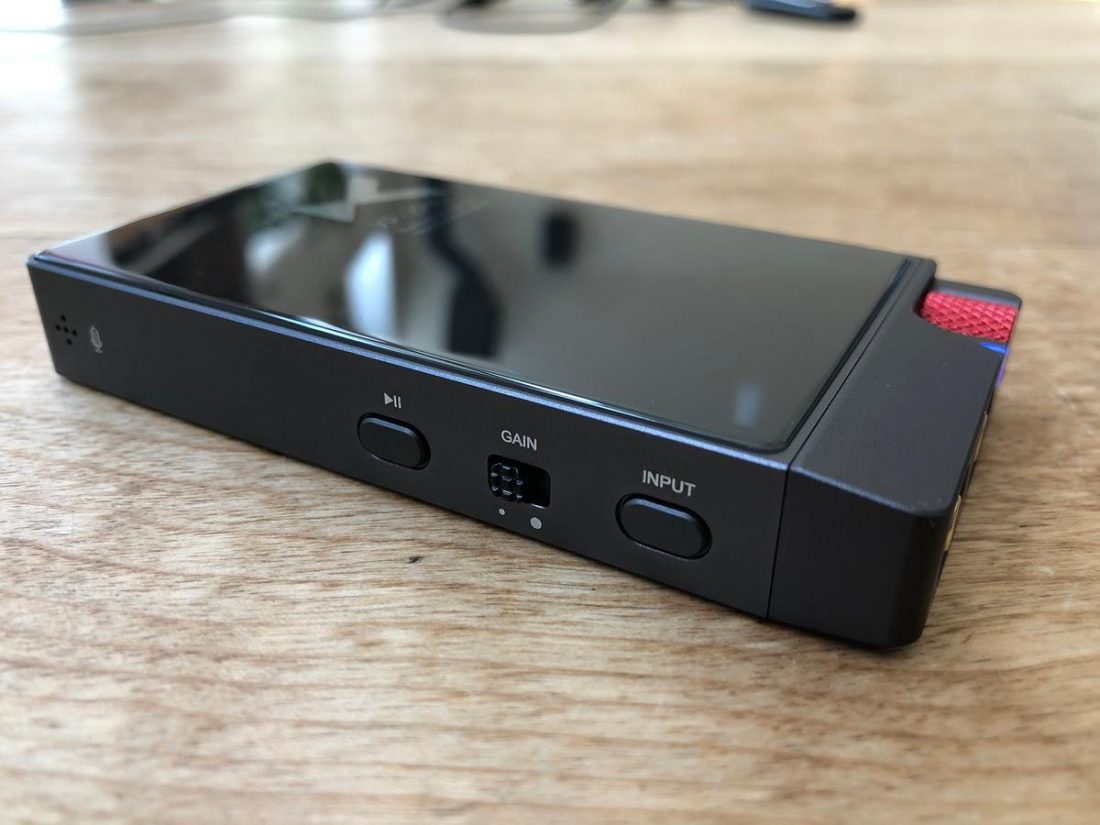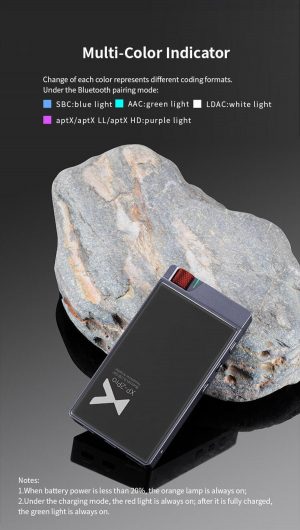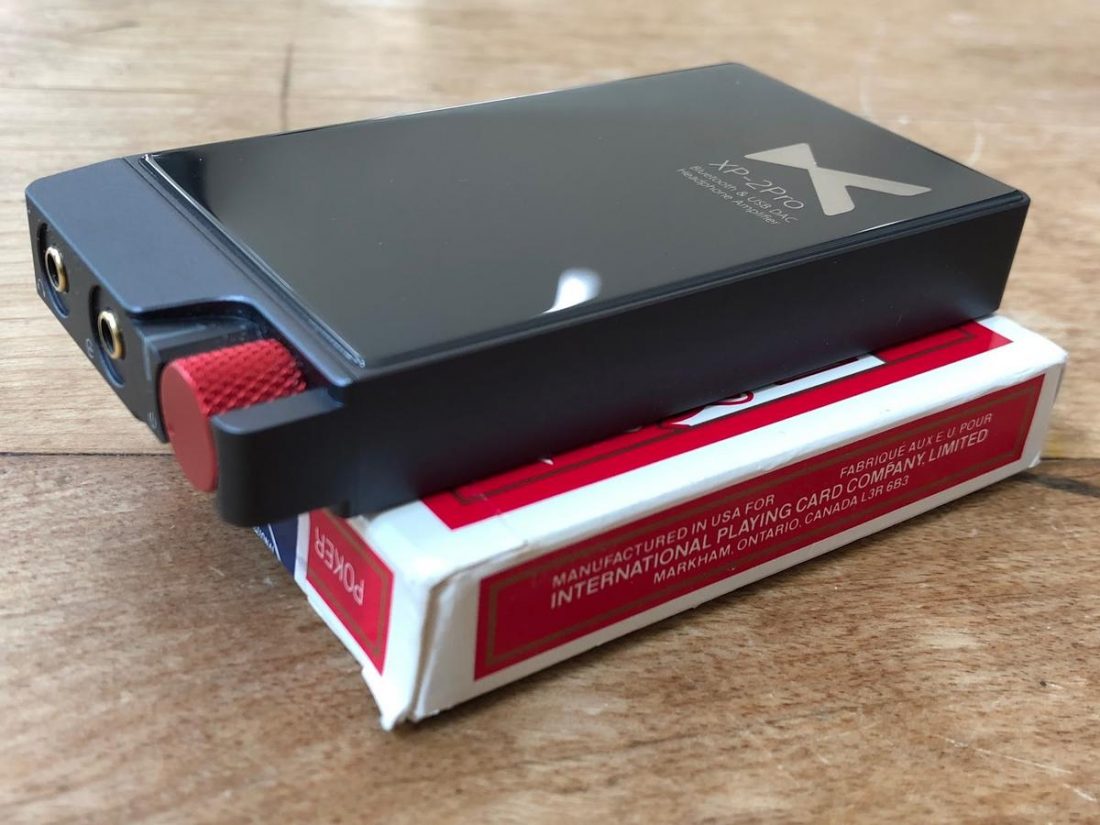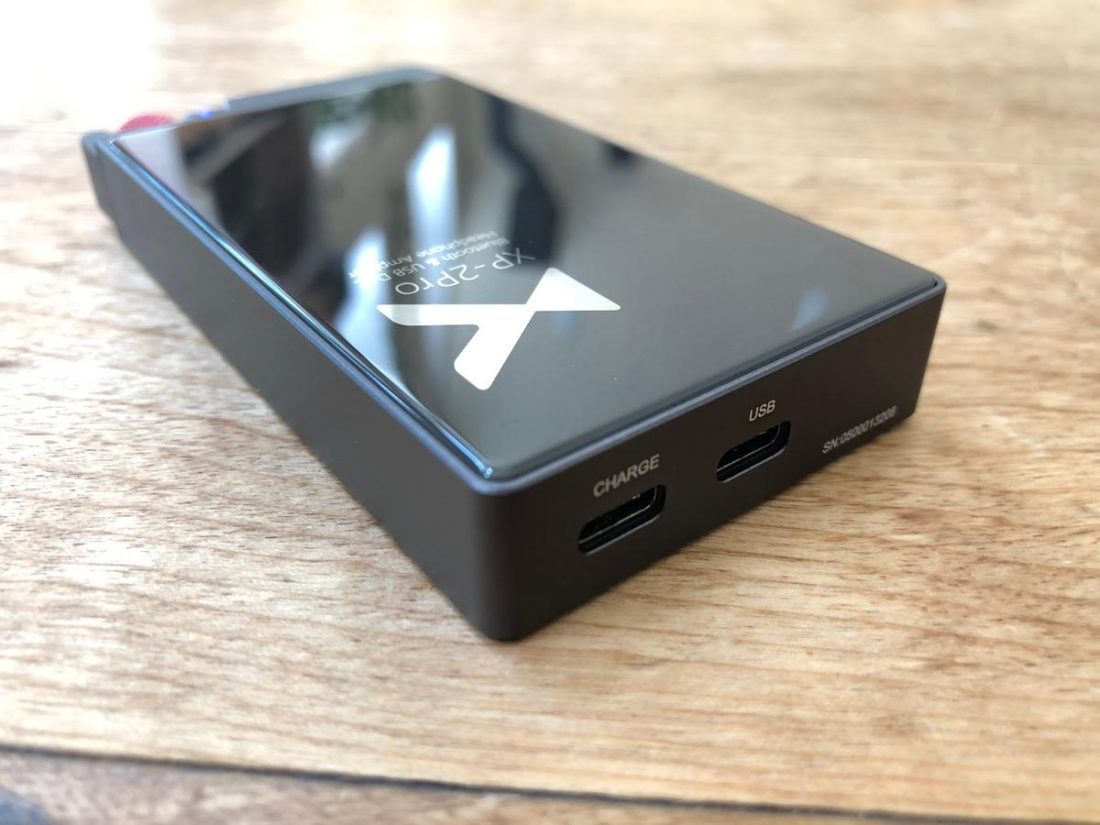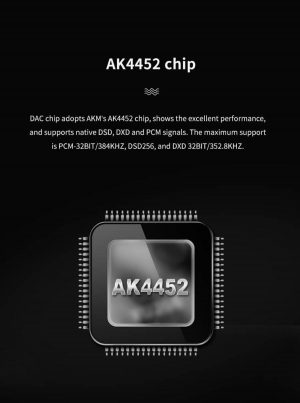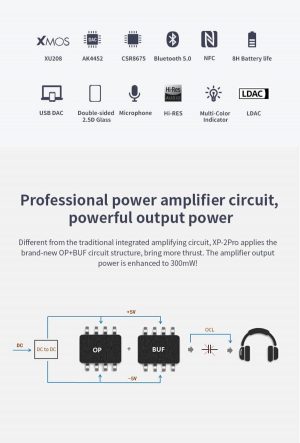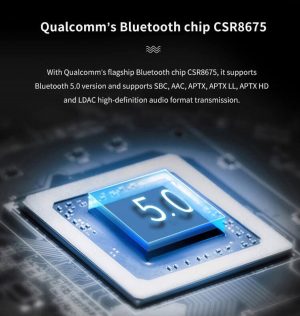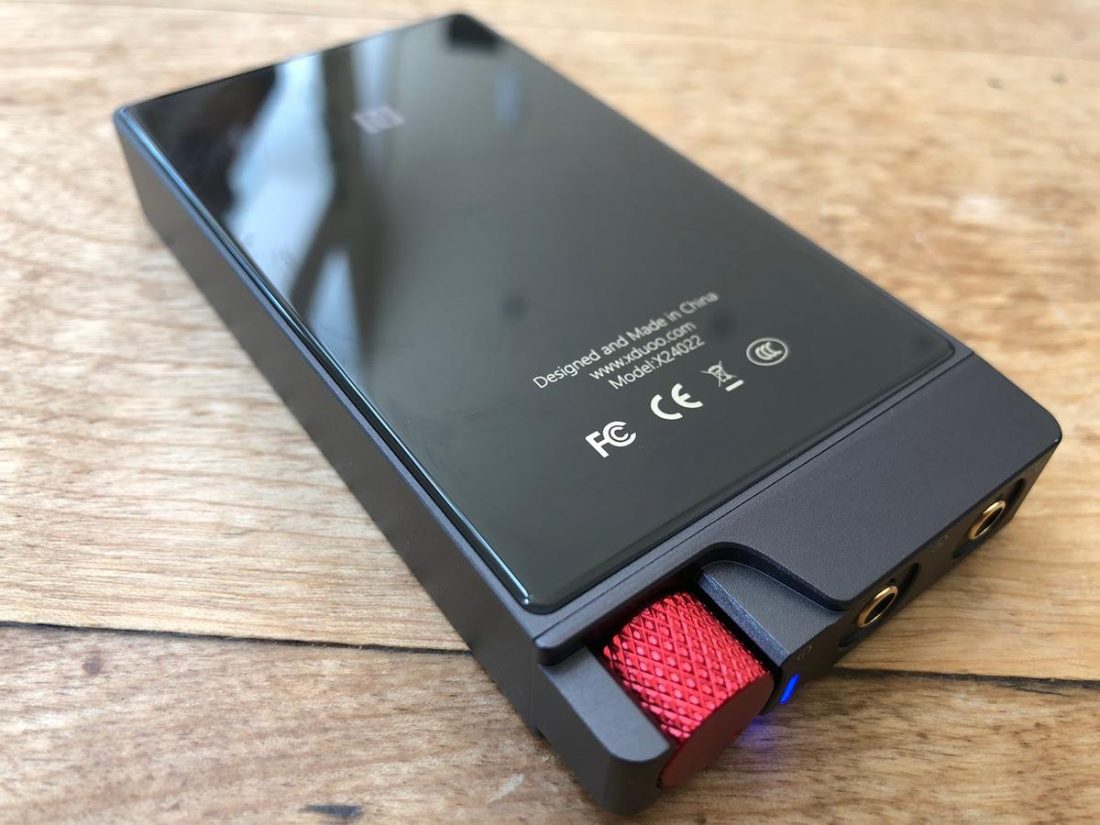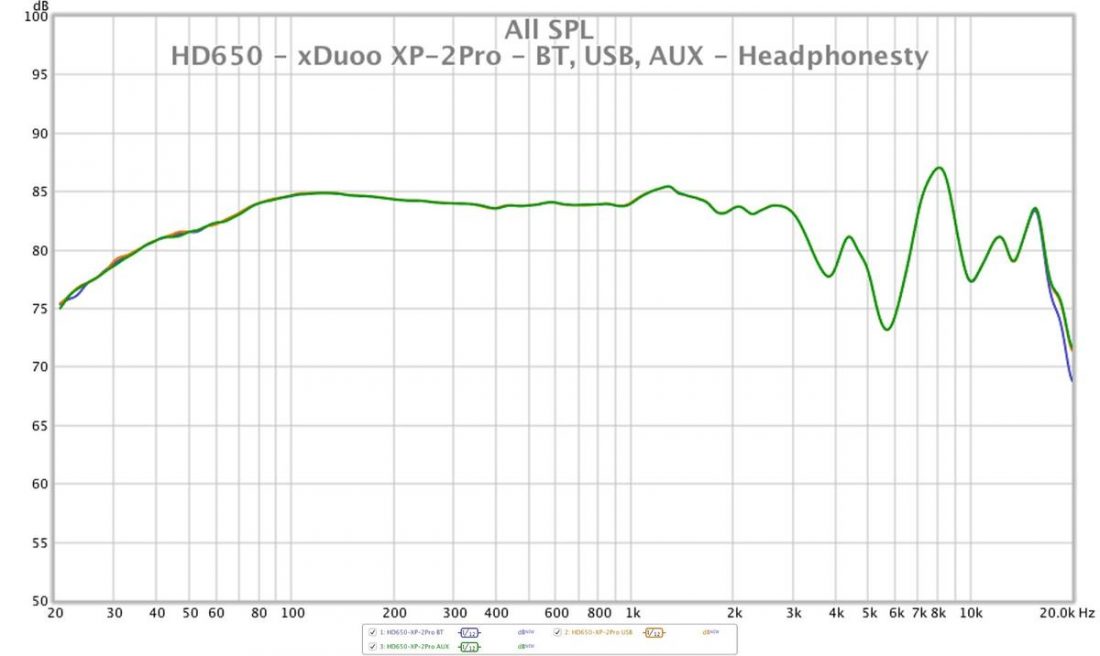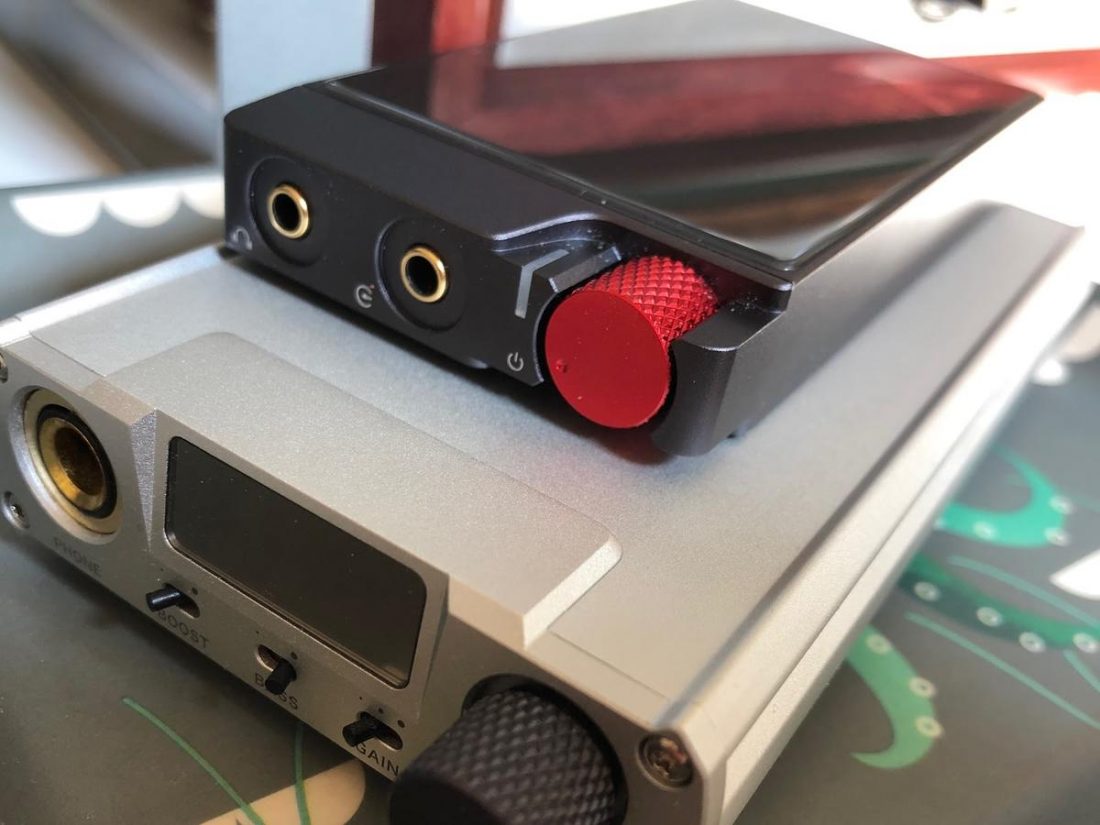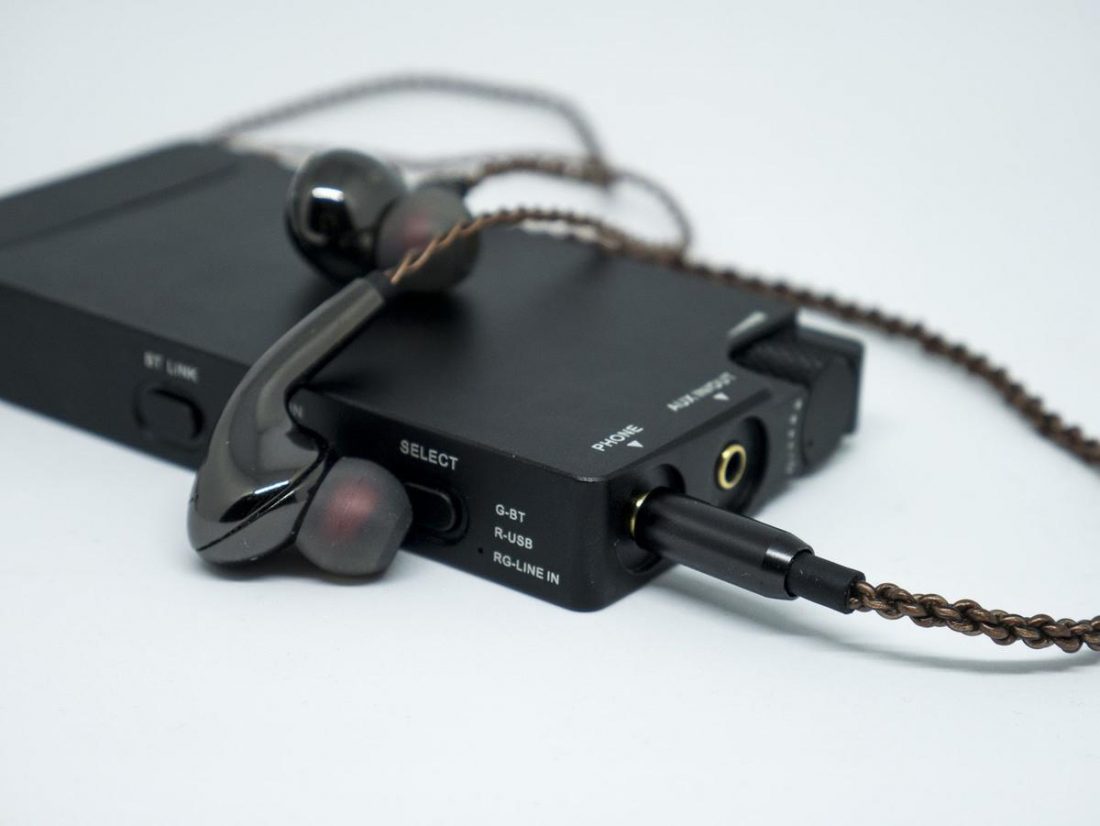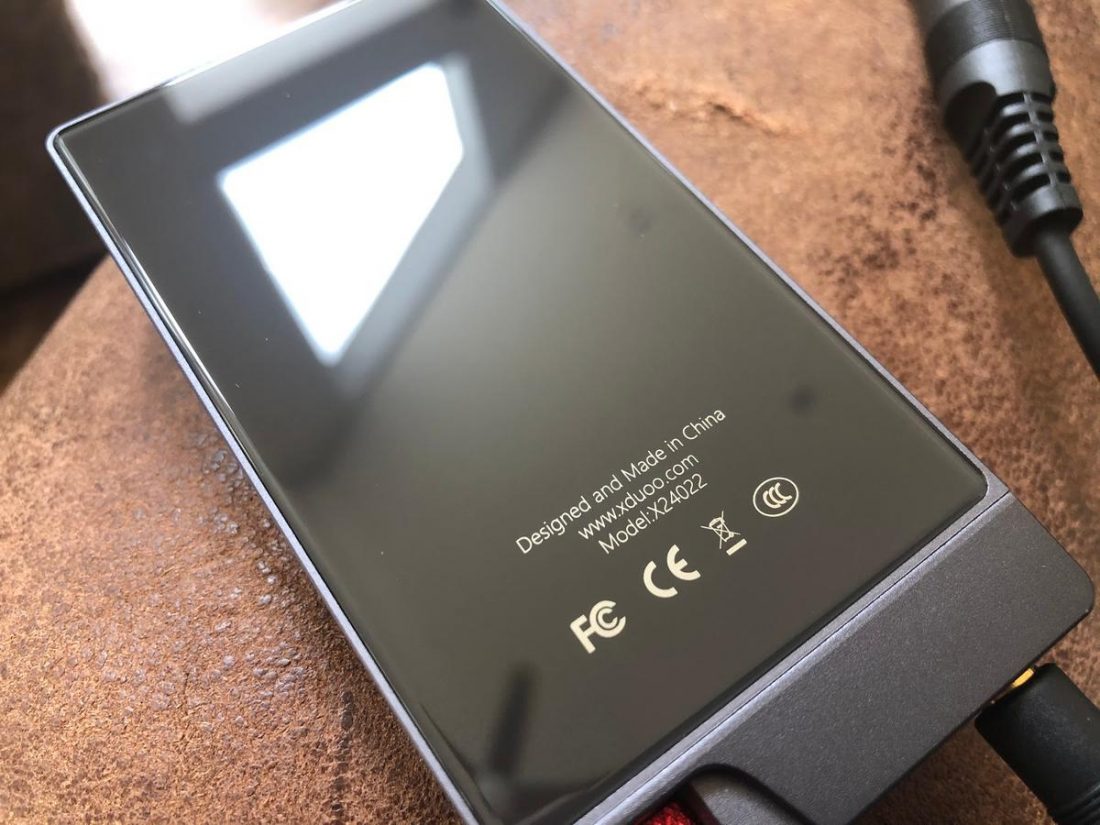xDuoo has just released a new device, the XP-2Pro, to fit into the niche of portable Bluetooth DAC/Amp. The $140 Pro is (unsurprisingly) the revised version of the previous XP-2 model. While the internal DAC chip remains the same, the new Pro version adds more power output, advanced codec support, higher bitrate playback, and a more elegant design. To be perfectly honest with you, I didn’t quite grasp the appeal of having Bluetooth in a portable DAC/Amp. On one hand, I thought that if you want Bluetooth, then the freedom of TWS earbuds or a Bluetooth cable adapter would provide the best solution since a device like the XP-2Pro still requires a cable running from your headphones to your pocket. On the other hand, if you were going to have your phone and a portable DAC/Amp in your pocket, then why not tether them together via a cable (and guarantee the highest sound quality). Alternatively, you could just go with a separate DAP. The Headphone Audio Facebook Group was quick to point out what was missing in my thinking. The first obvious answer is that if you are looking to buy a portable DAC/Amp then why limit yourself and get one without Bluetooth? A feature is a feature after all. Another major component I was missing from my thinking was usability. It turns out that using your phone, for any other purpose while listening to music, is far better if it isn’t tethered via elastic bands to a heavy DAC/Amp beneath it. Finally, since most of us are going to carry a phone anyways, why add a potentially expensive DAP as well to your pockets? While basic DAPs are fairly inexpensive, adding support for streaming services (something that is baked into just about every smartphone these days) means a more feature-rich and pricey DAP purchase is required. And there’s only so much room in our pockets after all. Of course, all the traditional reasons for adding a DAC/Amp to your portable setup still apply. Support for higher quality file playback, a better sounding conversion from the digital to the analog domain, and having power on hand to properly drive difficult headphones. Missing headphone jacks from the current batch of phones have also necessitated the use of an intermediate device, so why not have a good one? xDuoo has established itself by producing a variety of high-quality personal audio devices including the powerhouse portable DAC/Amp the XD05-Plus (available in Basic, Standard, and Plus versions). The XP-2 products are a smaller, more portable size and add Bluetooth to the mix, at the expense of a display, op-amp rolling, and power output. Let’s see if the xDuoo XP-2 Pro can open my eyes as to the benefits of Bluetooth in a portable DAC/Amp.
XDuoo Company Overview
There is not a lot of information available on the Shenzhen xDuoo Technology Co., Ltd. They are located in Shenzhen China and (according to their website) have served as an ODM for many well-known brands and companies for several years. XDuoo focuses on headphone audio products including portable and desktop DACs, amplifiers, Bluetooth modules, DAPs, and interconnection cables. They claim that “the total number of products designed is more than 100 models, and we have a number of patented technologies that can meet the needs of users.”
XP-2Pro Specifications
USB Input Support: Windows 7,8,10, Apple OSX, iOS, Android USB Chip: XMOS XU208 Bluetooth Chip: Qualcomm CSR8675 Bluetooth Version: 5.0 Near Field Pairing (NFC) Support: Yes DAC Chip: AK4452 Output Power: 300mW @32Ohms Frequency Response: USB/Bluetooth: 20Hz-20kHz (+/- 0.5 dB), Aux 10Hz-100kHz (+/- 0.5dB) Sampling Rate: USB PCM 16-32 Bit / 44.1kHz – 384kHz, DXD: 24-32 Bit / 352.8-384kHz. DSD: DOP/Native Mode, DSD 64-256 Bluetooth: 16-32bit / 44.1-96kHz Bluetooth Codec Support: SBC, AAC, aptX, aptX LL, aptX HD, LDAC Gain: + 3/9dB S/N: 115dB Crosstalk: >= 75dB THD+N: USB 0.001% @1kHz, Aux In 0.0009% @1kHz, Bluetooth 0.002% @1kHz Battery: 3.7v/1800 mAh Charge Time: 3 hours Run Time: Aux 22 hours, Bluetooth 15 hours, USB 8 hours Size: 105x55x15.6mm Weight: 142g Warranty: 12 months
XP-2Pro Packaging
xDuoo knows how to attractively package a product. The outer light-grey cardboard sleeve is covered in pictures and specifications. The internal black box is embossed with the xDuoo shiny black logo. Inside the box, the XP-Pro2 is nestled in a felt-topped foam insert. Underneath is a lift-off cardboard cover for the cables and the manual.
In the box
Dual 3.5mm analog audio cable (15 cm) USB-C to USB-C OTG cable (8.5 cm) USB-A to C charging cable (102 cm) Manual Warranty Card
There’s no storage bag nor rubber bands to tether the XP-2Pro to a phone, which can be forgiven as I assume this is intended primarily as a Bluetooth device. However, the lack of an Apple Lightning to USB-C cable is frustrating for us iOS users. I had to purchase this cable for the XD-05 Plus from xDuoo, and thankfully it works fine with the XP-2Pro as well. As is the norm, a 5V 1A charger is required but not included.
XP-2Pro Design
The entirety of the main body of the XP-2Pro appears to be sculpted from a single piece of grey anodized aluminum alloy. The top section, which contains the volume control and 3.5mm analog input and output sockets, has a seam (but no visible screws) and is made of matching aluminum material. The two large sides of the body are covered in what xDuoo calls “…high-hard 2.5D tempered glass…”. The glass looks terrific. That is, it looks terrific before you touch it. Once you pick up the XP-2Pro, it’s immediately covered in fingerprints. As the glass adheres to the top and bottom surfaces, it protrudes beyond any metal edge, so it’s likely going to be prone to breakage if dropped. It should be mentioned that 2.5D glass is only a naming convention to describe contoured glass that has a slight curvature towards its edges. So, 2.5D glass can be any brand of glass, strengthened or not, as long as its edges are slightly curved and thinner than the middle of the glass sheet. The red volume knob functions as a power switch by turning it past the minimum position (and it rewards you with a satisfying-feeling click). On one side, there is a button for cycling through the inputs and another for Play/Pause/Bluetooth Pairing. Between the two buttons is a High-Low Gain switch. The controls are all nice, solid, and tactile. While there is no screen on the XP-2Pro, a single large LED indicator located on the device’s top (between the analog headphone output / AUX input and the volume knob) does change color to reflect the current mode and playback condition.
Playback LED indicator colors
Battery LED indicator colors
A microphone, used only for Bluetooth calls, is located on the same side as the buttons. The bottom edge has two USB-C ports for a USB data connection and for charging.
Comfort
The XP-2Pro is similar in size to a standard pack of cards. It’s the same thickness, and about a cm longer but a little less than that narrower. This means it fits pretty easily in a pants pocket, but at 140g of solid aluminum, it’s too heavy for a shirt pocket.
XP-2Pro Internals
Battery
The battery run time makes a compelling argument to use Bluetooth rather than the USB connection. USB is rated for 8 hours, while Bluetooth is 15 hours and AUX is 22 hours. In my testing, those estimates may be a tad optimistic, but came fairly close, and all lasted for a full day’s worth of listening. There are two USB-C ports on the bottom of the device and you can charge the device while using it, however, it does take longer to complete a full charge cycle. If you are going to use the XP-2Pro connected to a computer as a wired DAC, it will require another (not included) USB-A to USB-C cable to charge it simultaneously. Of course, connecting via Bluetooth allows you to use the included cable to charge the device. Charge time is right around 3 hours from low. xDuoo recommends charging the XP-2Pro at least every 6 months.
DAC/Amp
The XP-2Pro functions as a wired amplifier, a wired DAC, or a Bluetooth DAC. At the heart of the digital conversion is the Asahi Kasei AKM AK4452 DAC chip. The AK4452 DAC chip was introduced in 2015 and it’s the same chip as was used in the original XP-2. It’s a decent chip, but it is getting a little long in the tooth for 2020. xDuoo describes the power amplifier circuit as “different from the traditional integrated amplifying circuit, XP-2Pro applies the brand-new OP+BUF circuit structure, bring more thrust. The amplifier output power is enhanced to 300mW.” I’m interpreting this to mean it is a current-buffering Op-Amp circuit. The original XP-2 put out [email protected] 32Ohms. Power output has been boosted to 300mW, so the XP-2Pro should be able to power most any IEMS, or the majority of full-sized headphones (depending on sensitivity). In fact, the XP-2Pro did fine with my Sennheiser HD650 and Audeze LCD-2 which are currently the most power demanding headphones on hand.
Bluetooth
Bluetooth duties are handled by the Qualcomm CSR8675 Bluetooth chip. It’s Bluetooth 5.0 and can support stereo playback at 192 kHz, although the XP-2Pro is only rated for 16-32bit / 44.1 – 96kHz via Bluetooth. I was a bit disappointed when I tested the range with my typical not-so-scientific approach. I leave my iPhone in the middle of the house and I wander to the corners listening as I go. Dropouts occurred upstairs (behind walls) and before I reached the farther parts of my not-so-big house. This was a bit less range than I experienced with the Shure RMCE-BT2 and Shanling MW200 Bluetooth adapter cables, which surprised me. It may be due to the all-metal body construction of the XP-2Pro interfering with the reception. I ran into no issues with usage in the same room.
Codec support
The XP-2Pro supports multiple codecs including Qualcomm aptX audio, aptX HD, aptX Low Latency (LL), LDAC, AAC, and SBC. AAC and aptX are virtually audibly indistinguishable, and both are an improvement over SBC. All Bluetooth codecs are inherently noisier than a wired connection, but this typically is only audible at high volumes (greater than 80dB) and/or at high frequencies. As such, AAC, SBC, and aptX codecs roll-off sharply after about 16kHz to minimize this issue. While 16 kHz is still technically in the audible frequency spectrum, there is very little musical content at that extreme, and after about age 25 we usually lose the ability to hear frequencies that high.
XP-2Pro Sound
While I’m a fan of the tactile nature of the volume knob, I’m far less enamored with the potentiometer it’s mated to. Much like with the XD-05 Plus, at very low volumes there is obvious channel imbalance. This is only noticeable when using efficient IEMs, but since this is a portable device, it is likely that users will attempt this sort of pairing. The following notes were taken using the Thieaudio Voyager 3 IEMs (14 Ohms, 113 [email protected]), with the Gain switch on the XP-2Pro set to Low and while connected via a Bluetooth AAC to my iPhone. Note that volume cannot be controlled on the phone when paired by Bluetooth. The time designates the volume switch position as if on an analog clock. The usable volume range is very small on the knob (between 10:00 and 11:00). Not quite so bad as with the 1000mW @32 Ohms of the ultra-powerful (for a portable device) XD-05 Plus. Still, the tradeoff between ‘enough power to drive inefficient headphones’, and the ‘ability to use efficient IEMs’ is seriously compromised by the use of a mediocre volume potentiometer. The noise floor is very good, however, as it remains entirely undetectable until the volume is far past a normal listening level even with the Thieaudio Voyager 3 IEMs. Swapping back and forth between the USB input and the Bluetooth inputs, the audible differences were very minor and I’m hard-pressed to tell them apart. This is likely a result of the same DAC chip and amplifier circuit handling the audio. If you take a close look at the measurements (taken with the miniDSP EARS and my MacBook Pro) USB, Bluetooth and AUX measurements were essentially identical for Sennheiser HD650 headphones. Note that these measurements utilized the aptX codec for Bluetooth and the MacBook’s built-in headphone output to connect to AUX. Overall, I find the sound slightly more bright and flat than I’m used to when compared with the Chord Electronics Mojo. In fact, the XP-2Pro sounds a lot like the xDuoo XD05-Plus. I’m such a tube-amp sound fan, that anything that is more neutral seems to come across this way to me. Regardless, the XP-2Pro sound appears uncolored, if a tad more sterile than my typical daily listens. The gain switch works well with providing enough juice for headphones like the Sennheiser HD650, and the result is clean, clear, and relatively transparent. Paired with warmer or more bass-inclined headphones like the Meze 99 Classics, the XP-2Pro seems to yield the best sound to my ears. If you have a clean source with a decent internal DAC, the wired amplifier section seems to work well without unduly changing the sound or signature of what is coming through. The [email protected] 32Ohms is enough to give a boost for some underpowered devices. That being said, I imagine bypassing the competent internal DAC will be the least common usage of the XP-2Pro
XP-2 and XP-2 Pro Comparison
Conclusion
What’s in a word? Well, if the word is ‘flexibility’, then that’s the word that best describes this new iteration of portable DAC/Amps, like the XP-2Pro. Finally, with the advent of high-quality codecs and proper Bluetooth functionality, wireless high-fidelity is becoming a reality. I’m sure future revisions will continue to reduce in size and increase in power, but for now, the XP-2Pro has fit itself into a sweet spot of affordable, high-quality portable audio. Those looking to try an external DAC/Amp for either their phone or desktop can now have one that will properly drive most headphones, and support a wide variety of connection methods. I truly wish that excellent mechanical potentiometers would find their way into low-cost products, as the low-volume channel imbalance and not-low-enough gain settings make the XP-2Pro marginally suitable for easy to drive IEMs. The noise floor is excellent (inaudibly low), but again I wish for a lower output power mode to allow for much finer volume control for efficient loads. However, since flexibility is the name of the game, the XP-2Pro succeeds as far more than simply being a ‘good enough’ solution for most needs. Behold the duct tape of the portable audio world! That is if duct tape had flawless build construction, clear and transparent sound, and worked great in almost any situation you use it for.
